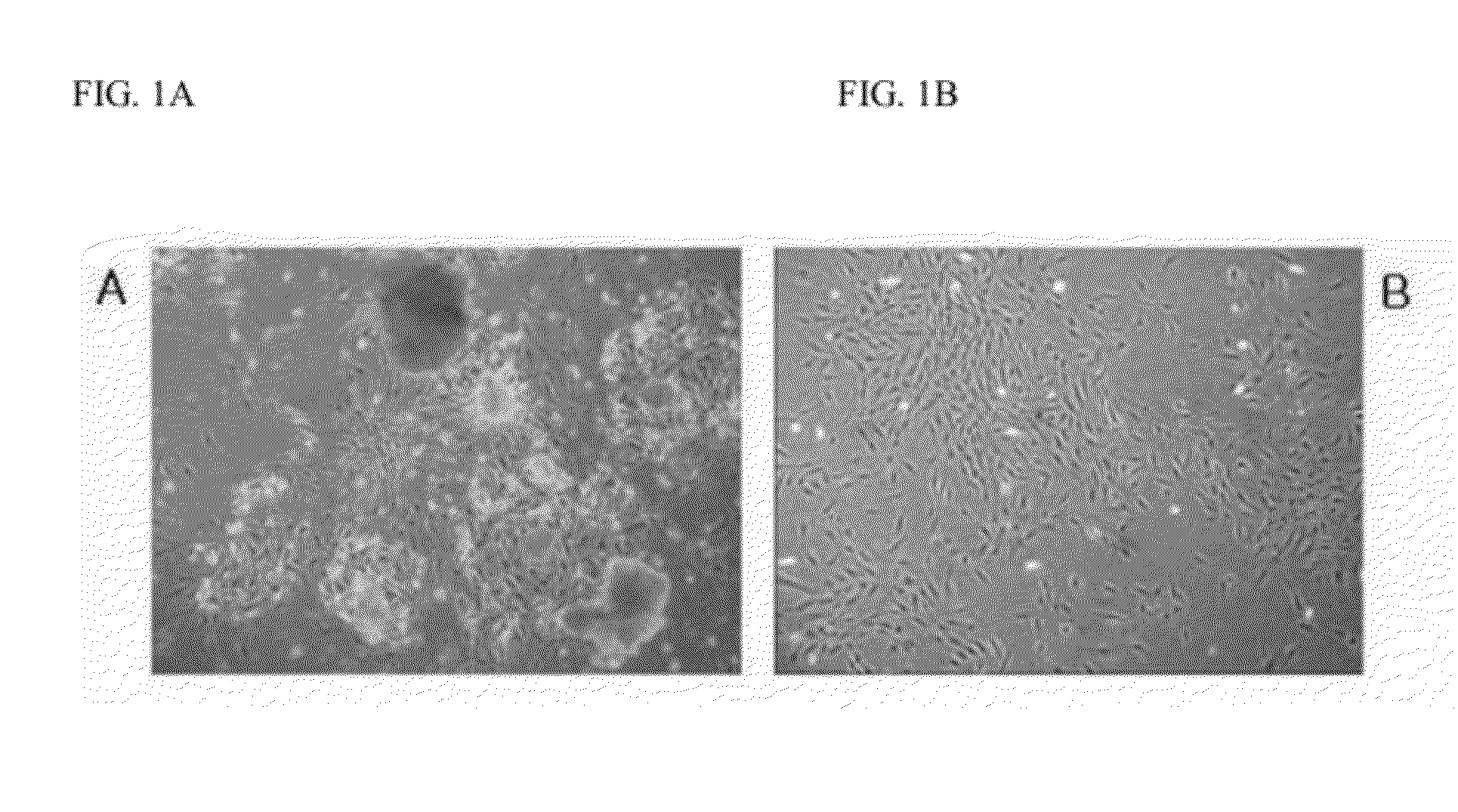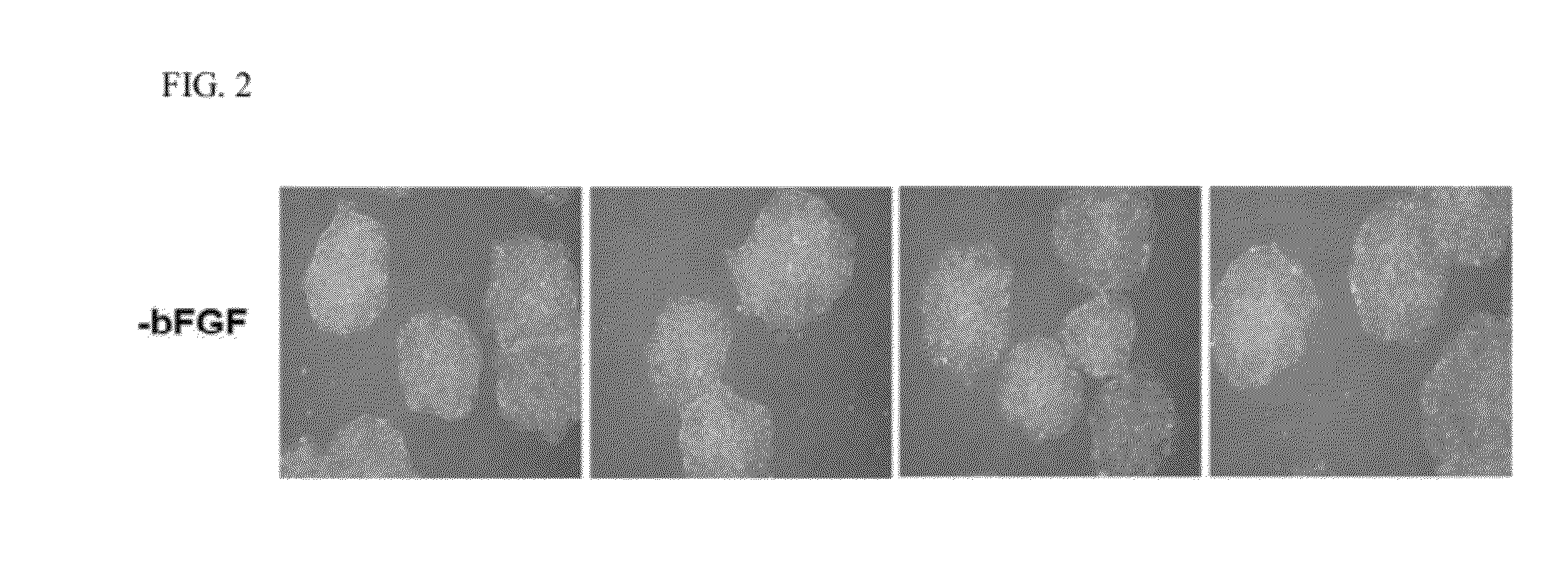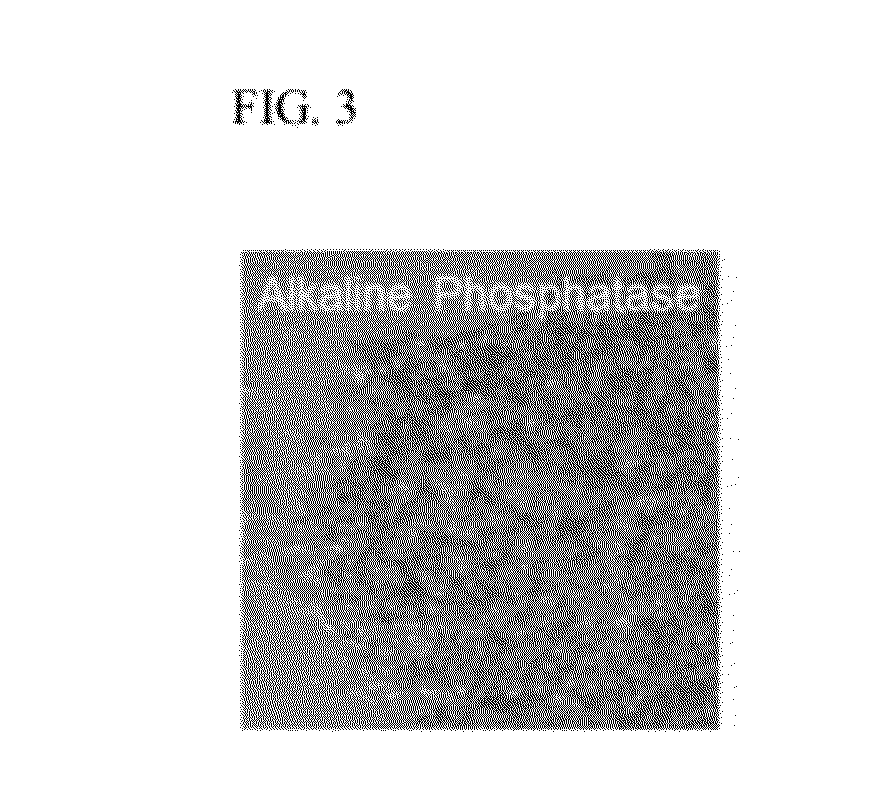Placenta-derived cell-conditioned culture media and animal-free, feeder-free method for culturing stem cells using the same
a cell culture and placenta technology, applied in the field of placenta-derived cell culture media and animal-free, feeder-free culture methods for stem cells, can solve the problems of unsolved basic problems, unexpected and serious adverse effects, and the disclosure of vivo culture techniques, and achieve the effect of higher economic benefits
- Summary
- Abstract
- Description
- Claims
- Application Information
AI Technical Summary
Benefits of technology
Problems solved by technology
Method used
Image
Examples
example 1
Production of Human Placenta-Derived Cells
[0061]Chorionic plates were excised from the placentae of healthy women by operation, minced and incubated at 37° C. for 30 min in 0.25% trypsin-EDTA (GIBCO-Invitrogen, Carlsbad, Calif.). Then, the cells were cultured at 37° C. and an RH of 95% in DMEM (Dulbecco's modified Eagle medium) supplemented with 20% fetal bovine serum (FBS; HyClone Laboratories Inc, Logan, Utah), 100 U / ml penicillin and 100 μg / ml streptomycin in a 5% CO2 atmosphere.
[0062]Until three passages, the medium was freshly exchanged every three to four days. During passages, floating cell debris was removed from the media. Placenta-derived fibroblast-like cells adherent to the well plates were visualized. From two weeks after the cells were seeded, placenta-derived fibroblast-like cells adherent to the well plates formed colonies (FIG. 1).
[0063]After being cultured until the 12th passage, all the human placenta-derived cells (HPCs) were stocked. Before cryopreservation, the...
example 2
Production of Placenta-Derived Cell-Conditioned (PC-Conditioned) Media
[0064]A frozen stock of HPCs was thawed and seeded at a density of 1×106 cells / well into 35-mm well plates coated with 0.1% gelatin. To each well of the well plates was added 10 ml of DMEM / F-12 supplemented with 20% knockout serum replacer (GIBCO), 0.1 mM β-mercaptoethanol, and 1% penicillin-streptomycin (Sigma), followed by incubation for 24 hours at 37° C. and an RH of 95% in a 5% CO2 atmosphere. Only the medium was recovered and stored at 4° C.
example 3
In vitro Maintenance and Propagation of Undifferentiated Human Embryonic Stem Cells in PC-Conditioned Media for Long Period of Time
[0065]The H1 human embryonic stem cell line was seeded into a gelatin cell culture dish containing an HPC-conditioned medium and cultured at 37° C. and an RH of 95% in a 5% CO2 atmosphere, with the HPC-conditioned medium freshly changed every 48 hours. The H1 human embryonic stem cell line was passaged every week in a gelatin-coated cell culture dish and propagated in an undifferentiated state until at least the 20th passage.
[0066]The undifferentiated state was confirmed optically every day by observation with an inverted microscope and biochemically every five passages by examining stemness markers through immunostaining against alkaline phosphatase (ALP), Oct-4, stage specific embryonic antigen (SSEA)-4, tumor rejection antigen (TRA)-60, and TRA-81 (FIGS. 3, 4, 7 and 10) and RT-PCR for Oct-4, Nanog, and Rex-1 (FIG. 5).
[0067]Primers used in the RT-PCR a...
PUM
 Login to view more
Login to view more Abstract
Description
Claims
Application Information
 Login to view more
Login to view more - R&D Engineer
- R&D Manager
- IP Professional
- Industry Leading Data Capabilities
- Powerful AI technology
- Patent DNA Extraction
Browse by: Latest US Patents, China's latest patents, Technical Efficacy Thesaurus, Application Domain, Technology Topic.
© 2024 PatSnap. All rights reserved.Legal|Privacy policy|Modern Slavery Act Transparency Statement|Sitemap



